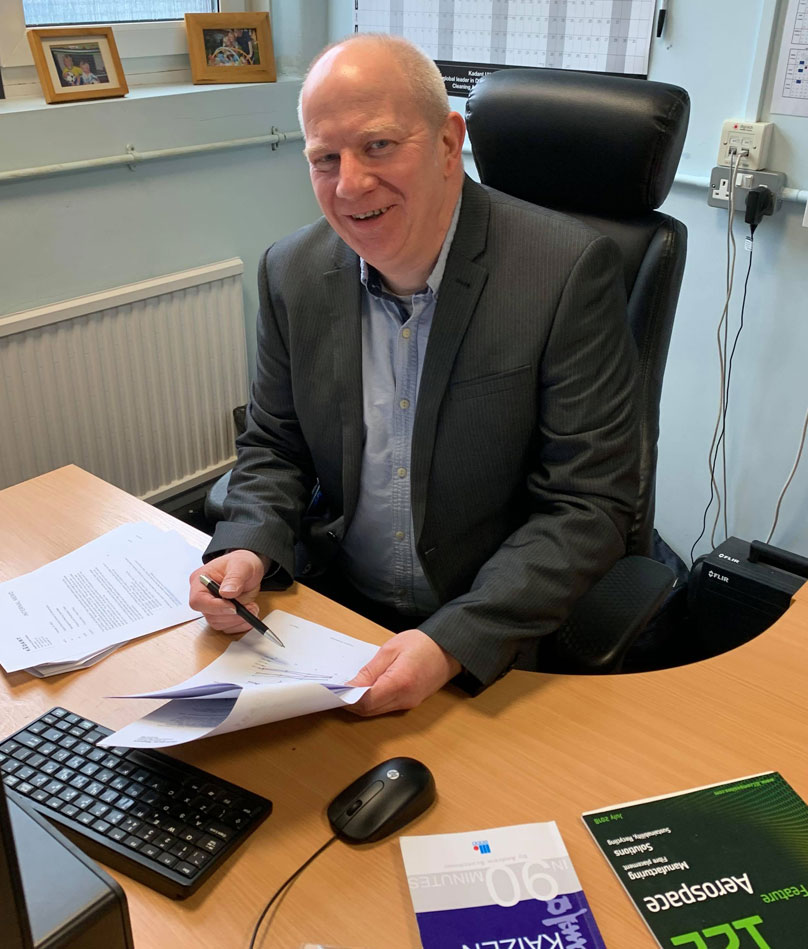How Kadant UK R&D Helps with Customer Problems: An Interview with Dr. Mike Draper
 I had the pleasure of recently interviewing Dr. Mike Draper to learn more about his various experiences working in research and development at Kadant UK. Mike has been with Kadant UK for 19 years and held several roles including composite blade product manager, R&D manager, composite manager, and currently, director of operations & research and development.
I had the pleasure of recently interviewing Dr. Mike Draper to learn more about his various experiences working in research and development at Kadant UK. Mike has been with Kadant UK for 19 years and held several roles including composite blade product manager, R&D manager, composite manager, and currently, director of operations & research and development.
Following the completion of his Bachelor of Science degree in chemistry at Manchester University, Mike specialized in polymer chemistry for three years and obtained a PhD.
FS: What is the role of research and development at Kadant UK?
MD: It involves developing new products that will either solve customer problems or help customers to improve their productivity.
FS: Have you always been interested in product research and development?
MD: Yes. I’ve always enjoyed working with materials and trying to find new uses for them that push the boundaries of science.
FS: How has working with Kadant UK complimented this interest?
Kadant UK has given me the opportunity to work with state-of-the-art materials and incorporate them into high performance products, while also providing me with the opportunity to travel around the world to learn about and discover the latest technologies.
FS: A customer approaches Kadant UK with a new problem which we don’t yet have a product to resolve, what are the initial steps you take to begin researching and designing a potential product?
MD: The first step is to understand the problem and comprehend what the customer is looking to achieve. It is important to consider what material products are required to achieve their goal and then you start to combine them together to produce a product.
FS: What is your favourite Kadant product you have helped develop and why?
MD: That would probably be our nForce™ nanotechnology-enhanced doctor blade. In this product, we combined several technologies that we had developed to produce the ultimate cleaning doctor blade for heavily contaminated early dryers. These technologies included Kadant nanotechnology, our combination fiber technology, our repel technology, and our metal scrim technology. Integrating these materials and seeing the synergistic result was very satisfying.
FS: Can you recall a time where you felt challenged when trying to solve a customer problem? How did you overcome this?
MD: Trying to develop a product that would remove liquids and oils from highly polished chrome rolls in the lithium-ion battery separator film industry proved particularly challenging. Conventional blades and technologies either scratched the rolls or couldn’t remove the liquids. Eventually we solved the problem with the VeriStrip™ R doctor blade. I guess we overcame this hurdle with hard work and our refusal to give up on finding a solution.
FS: What is the most rewarding aspect of your job?
MD: Positive feedback from a customer when we have solved their problem. Also, having a patent granted is very rewarding and gratifying. It confirms that the product or technology that you have developed has been judged by the independent patent office body to be both novel and inventive. It also designates that the technology now belongs to Kadant. We currently have six doctor blade related patents that are either granted or pending.
FS: What is next for the future of research and development at Kadant UK?
MD: As we move forward, I believe the next generation of doctor blades will be more sustainable and made from renewable resins and reinforcement fibers. We already have a patent application filed to secure this technology for Kadant. Also, my role is changing as I become more involved in the operations side of the business. Dr. Ka Lun To will continue to drive our development initiatives forward with fresh ideas and further advancements as he leads our research and development objectives to the next level.